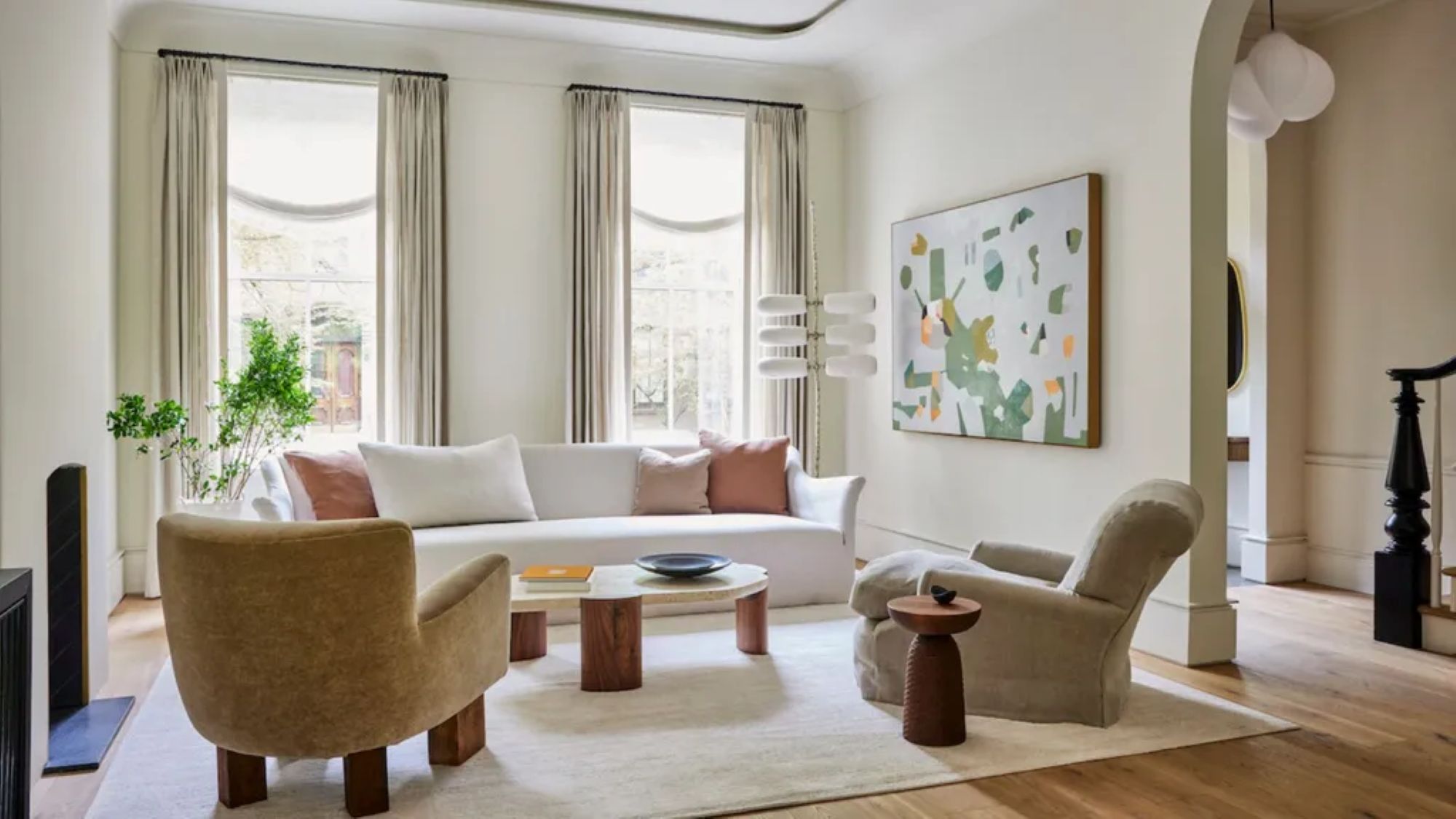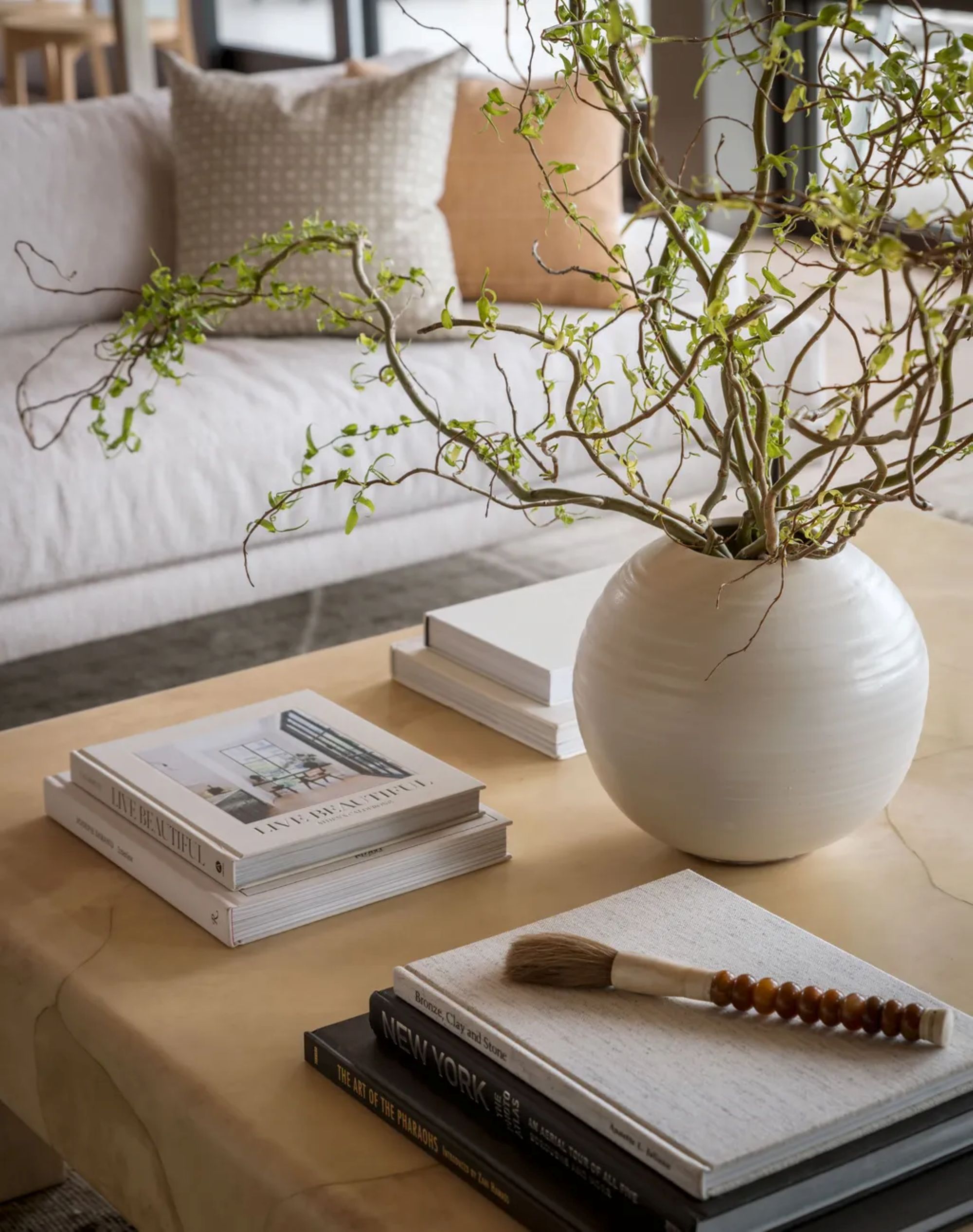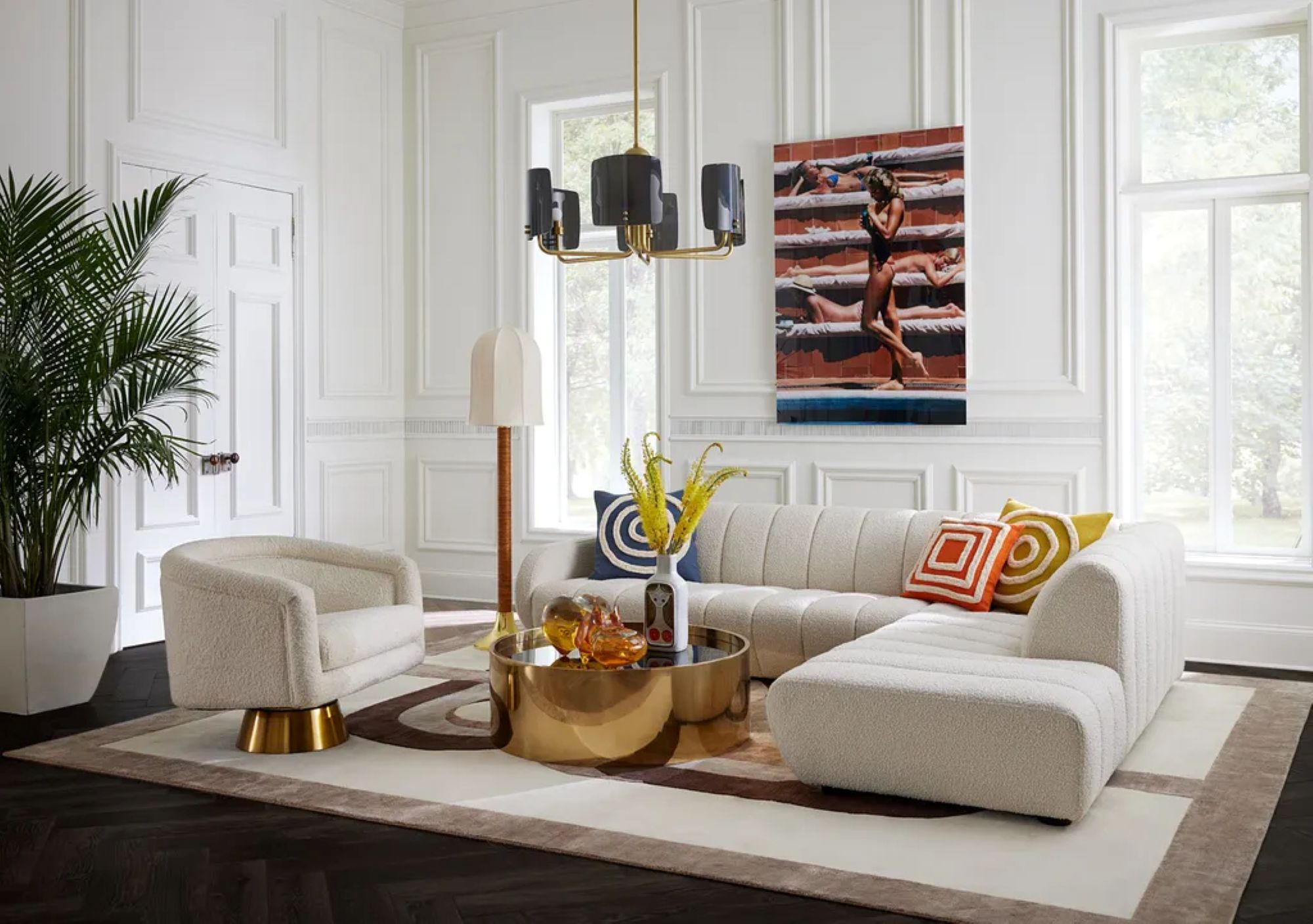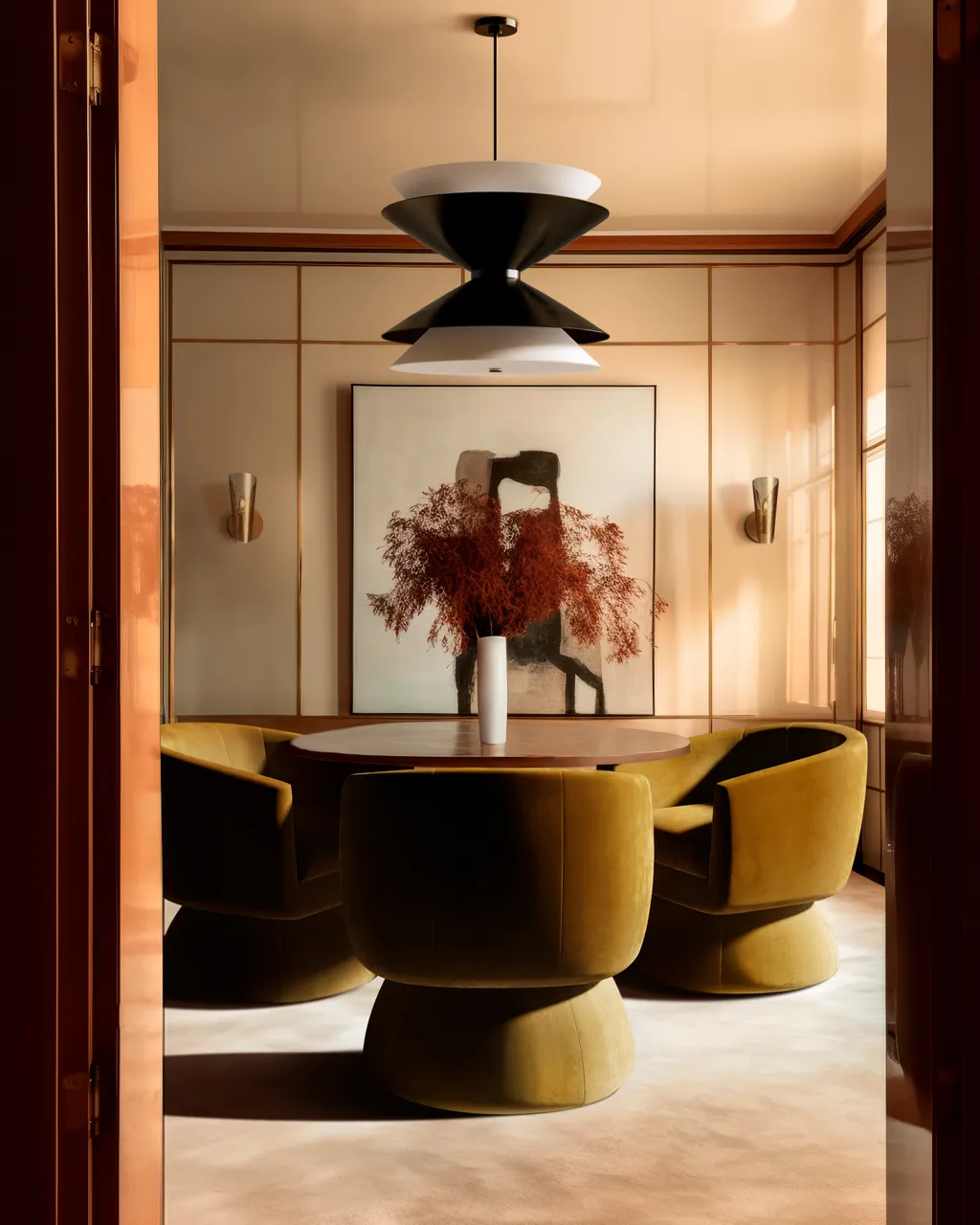
Ever strategically styled a shelf or space in your home, stepped back, and felt like something just isn't quite right? You like the overall color scheme and each individual piece, but together, it just doesn't quite work. What could be wrong? I'll tell you — it's the symmetry.
Sometimes, when a room looks too symmetrical, it can feel stiff, and inauthentic. That's where the 3-5-7 rule in decorating comes into play — a clever interior design rule that intentionally disrupts that dreaded 'matchy-matchy' decorating mistake.
"The 3-5-7 rule is based on the idea that odd numbers of objects (ideally 3, 5, or 7) are more visually engaging and appealing than even-numbered groupings," explains interior designer Jamie Gernert.
The use of odd numbers in design introduces intentional asymmetry, which can make a room feel more dynamic, lived-in, and authentic. As designer Alana Marie tells Livingetc, "odd numbers tend to create more visual interest, or create a focal point."
If you're worried that odd numbers or asymmetry will make a space feel off-balanced, don't be. In fact, it can actually help create a sense of balance in interior design. Below, we break down how.

Now, all that is not to say that there is no place for symmetry in interior design — far from it. But, the issue with making everything completely symmetrical is that as soon as something is slightly out of line, it can throw off the whole balance of the room.
"If you have a living room with equal sized facing sofas and a coffee table dividing them, the room will look incomplete if one sofa has a side table and the other doesn’t," explains interior designer Alana Marie. "However, if you have two chairs opposite the sofa, a side table can be placed in a different location without feeling like it is missing compared to the other side."
This way, the room is intentionally asymmetrical, but still feels balanced — which is exactly what the 3-5-7 rule for decorating is all about.
When to Use The 3-5-7 Rule in Decorating

On the Coffee Table
While the 3-5-7 rule in decorating can be applied to any room as a whole, it's most effective and transformative on a smaller scale, explains Jamie.
Take coffee table styling, for instance. "Usually this is a smaller surface and does not take a lot of objects," Jamie says, which makes it the perfect place to apply the 3-5-7 rule.
Jamie suggests stacking three or five books on the table, incorporating a vase, some candles, and even a decorative tray. Styling these coffee table decor ideas in groups of odd numbers can create an asymmetrical yet balanced scheme that can ultimately benefit the entire look of your living room.
A decorative object added on top of a stack of books is like the star on top of a Christmas tree — it's the perfect finishing touch. This decorative gold tray can add a bit of sparkle and unique texture to your coffee table.
This set of three candle holders can be an easy way to test the 3-5-7 rule in your home. Place these near each other in a scattered order to create unique visual appeal on your coffee table.
Jamie suggests adding a tall vase to your coffee table to create some height difference and add some dimension to the table's styling. This vase can do just that with its warped form and unique hammered texture.

On A Bookcase
Another great place to try the 3-5-7 rule when decorating is on bookcases or shelves. f course, you can style a bookcase with books, but if you're opting for decor instead, if the layout is slightly awry, it can easily become an awkward eyesore in your space.
This is where the 3-5-7 rule can be helpful — use odd number groupings to bring cohesion but create visual interest on individual shelves and groups of shelves.
Jamie recommends focusing on details like color, shapes, materials, and scale to create visually appealing odd number groupings. And of course, don't forget about spacing.
"Even if you have a large bookcase, that doesn't mean it needs to be completely filled," she adds. "The key is to leave some space between pairings to create even more visual interest.
Decorative dishes can act as optimal bookshelf decor. Leave this empty or fill it with small trinkets to make a visual impact amongst the books and other objects on your shelves.
One of the easiest ways to implement the 3-5-7 rule on your bookshelf is simply through books. Create a few stacks of books in varying odd numbers (either horizontally or vertically) to create some dimension and interest to the look and layout of the shelves.
No bookshelf is complete without stylish bookends. This set can add some color and texture to your bookshelf through its marble finish. Plus, this pair is bound to add some height variety when placed against a stack of books.

On A Bed Or Couch
Throw pillows, whether on a bed or couch, are another instance in which the 3-5-7 rule can come in handy. Rather than styling a bed or couch with a perfectly even pillow arrangement, take one out, change it up, and cause some purposeful asymmetry to create visual interest.
Jamie points out that factors like size and scale is important when implementing the 3-5-7 rule, so when it comes to choosing pillows, embrace variety.
A lumbar pillow juxtaposed with two square pillows can create a balanced visual, as can two squares, two rectangles, and one round pillow. And as you arrange the pillows, think about which order feels most organic and relaxed, rather than overly matched. This will help the bed or couch feel authentic to your style, and the room feel cohesive through its subtle differences.
A pillow like this can add a unique look to your couch or bed decor. From its leather material to its woven finish and square shape, this pillow is bound to add some visual interest.
Craving a pop of texture in your pillow collection? Opt for a shag throw pillow like this one. Its simple white color simplifies the busy fringe, but makes the pillow look effortlessly chic and elegant.
Every bed needs a bolster pillow. This style is made from a slightly textured velvet material and can add some visual interest to your pillow arrangement with its unique size and shape.
When To Avoid the 3-5-7 Rule in Decorating

Whether applied to an entire room or used to style small, individual spaces, the 3-5-7 rule in decorating can create visual interest and uniqueness. However, there are times when designers advise against using this rule — that is when symmetry becomes a priority.
For instance, in spaces like a formal dining room, symmetry is essential to the overall look of the space. "Oftentimes, you want an equal number or chairs around a table," Alana says, and therefore, the 3-5-7 rule is obsolete.
Jamie agrees, adding that "more traditional or classical styled rooms might call for more symmetry."
However, this certainly doesn't mean you can't use the 3-5-7 rule in these types of spaces. Just use it in smaller doses — like as a centerpiece idea or even to decorate your walls. Odd numbers will always have visual impact if they're used strategically.

In the end, the 3-5-7 rule in decorating is all about creating balance through asymmetry — regardless of whether you're working on a large scale or small scale.
It encourages you to be thoughtful with the curation of your decor, and can ultimately make your space feel more authentic.
When it comes to knowing where to start, Alana and Jamie both say to pick a focal point. From there, build cohesion through odd number groupings.
Next up: discover the 60-30-10 rule for decorating.







